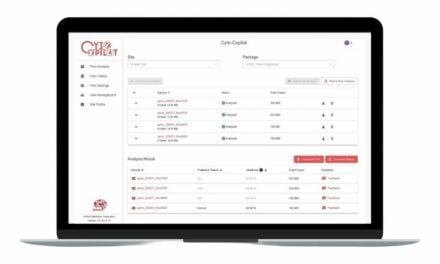MARLIN uses DNA methylation patterns and machine learning to classify leukemia subtypes, potentially accelerating treatment decisions.
Researchers at Dana-Farber Cancer Institute have developed a diagnostic tool that can classify acute leukemia subtypes in as little as two hours from biopsy, compared to current methods that often take days or weeks.
The tool, called MARLIN (Methylation- and AI-guided Rapid Leukemia Subtype Inference), combines DNA methylation pattern analysis with machine learning to provide rapid and detailed insights into leukemia classification. The findings were published in Nature Genetics.
“Ultimately, we envision that methylation-based acute leukemia classifications will complement standard-of-care diagnostic tests to provide more complete and timely information to pathologists, clinicians, and patients,” says Volker Hovestadt, PhD, a computational biologist at Dana-Farber and co-senior author of the study, in a release.
Building a Reference Database
To develop MARLIN, researchers created a reference database of DNA methylation patterns from more than 2,500 patient samples, representing various leukemia subtypes. This analysis revealed 38 distinct methylation classes across disease subtypes in adults and children.
“Our analysis confirms many established molecular categories in acute leukemia but also reveals new classes that are best seen through the lens of epigenetics,” says Til Steinicke, co-first author of the study, in a release.
Using this reference dataset, the team trained a neural network to identify methylation classes in bone marrow and blood samples from patients with acute leukemia. When paired with long-read nanopore sequencing technology, MARLIN demonstrated high accuracy for disease classification in both retrospective and prospective samples.
Rapid Results with Minimal Data
The researchers adapted their machine learning approach to work with small amounts of input data, enabling quick classification after just minutes of sequencing.
“We adapted our machine learning approach to use very small amounts of data as input, which allowed us to quickly generate classifications after just a few minutes of sequencing,” says Dr Salvatore Benfatto, co-first author of the study, in a release.
In real-time testing, MARLIN correctly classified leukemia samples in under two hours from biopsy receipt. The tool also identified diagnostic gaps missed by conventional methods, including cryptic genetic events such as rearrangements involving the DUX4 gene associated with favorable clinical outcomes.
Clinical Applications
MARLIN revealed novel predictive signatures, including HOX-activated subgroups, which could inform future treatment strategies. The tool’s ability to provide rapid classification could enable clinicians to make treatment decisions sooner with more complete information.
“As our work continues, we hope MARLIN will greatly accelerate treatment planning, reduce medical complications, and ease patient worries in the future,” says Evan Chen, MD, a collaborator on the study and Dana-Farber medical oncologist in the Division of leukemia, in a release.
The researchers plan to develop MARLIN into a clinical tool that can accelerate disease classification and inform treatment selection in real-time.
“We believe that our framework paves the way for future developments in epigenetic classification of acute leukemia, machine learning-assisted diagnostics, and methylation-based predictive biomarkers of drug response,” says Gabriel Griffin, MD, a cancer researcher and Dana-Farber pathologist and co-senior author of the study, in a release.
ID 320257648 © Justlight | Dreamstime.com





